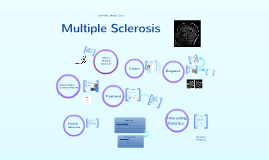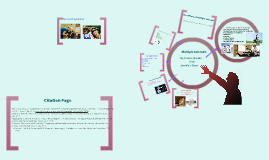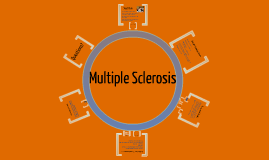Multiple Sclerosis
Transcript: Ishwinder, Mehali, Sana Thanks for Listening! Multiple Sclerosis Treatment Bibliography http://www.msstrength.com/avonex-for-mu http://www.mayoclinic.com/health/medical/IM00962ltiple-sclerosis/ http://www.health.com/health/library/mdp/0,,zm6056,00.html http://www.visualphotos.com/image/1x8466985/tem_of_myelin_sheath http://www.mayoclinic.com/health/medical/IM00962http://www.msconnections.org/ • Destruction of myelin (2012), multiple sclerosis (MS), Encyclopaedia Britannica, Volume 1, http://school.eb.com/article-9054246 Marshall Cavendish, (1996), Multiple sclerosis, encyclopedia of life science, volume 9, page 1175, New York, London, Toronto, Sydney President and fellows of Harvard college, (August 21, 2006), Multiple Sclerosis (MS), book and fact sheets, http://www.nmss.org/ Organs Affected usually occurs between the age of 20 -40 affects more women than men patients still have a normal life expectancy, quality of life may decrease in most cases, there is evidence of a genetic component over a million people affected worldwide more common in temperate regions, than tropical more common in Europeans, less common in Africans/Asians Causes Causes Organs/ Organ Systems Affected Interesting Facts ORGANS/ORGAN SYSTEMS AFFECTED • 95% of the people diagnosed live a normal life •Some could be unable to walk, write or speak. •But most of the patients are rarely affected. •People with controlled symptoms tend to do fine than the ones who have uncontrolled chronic symptoms. •The symptoms can be taken control of by rest, good nutrition and less stress. - difficult to diagnose as symptoms might be recognized as other diseases/conditions - needed to diagnose: medical history, standard neurological examination, several lab tests lab tests include: MRI A lumbar puncture Evoked potential tests -can affect a person's ability to move, feel, and to control body functions tingling numbness dizziness vision problems fatigue Organ Systems Affected Symptoms can develop in four types of patterns: Relapsing remitting Primary progressive Secondary progressive Progressive relapsing Diagnosis Pictures (Sources) •Brain •Optic nerve •Spinal Cord multiple sclerosis is a progressive autoimmune disease myelin sheaths that surround neurons (brain cells) are being destroyed, exposing and damaging the axon of neurons affects the central nervous system • no cure • drugs like Avonex, Betaseron, and Rebif could be used to control the chronic symptoms • rehabilitation and supportive measures could be a part of the treatment. Possible Outcomes What is Multiple Sclerosis Treatment What is Multiple Sclerosis? Possible Outcomes Interesting Statistics • Three Goals of drug therapy are: 1. Acute episodes 2. Prevention of disease progression 3. Treatment of Chronic symptoms • Symptoms that can be treated include: o Muscle spasticity o Depression o Pain o Tremor o Fatigue o Bladder and bower dysfunctions. Drug Therapy •central nervous system Diagnosis Type of Diagnosis

















